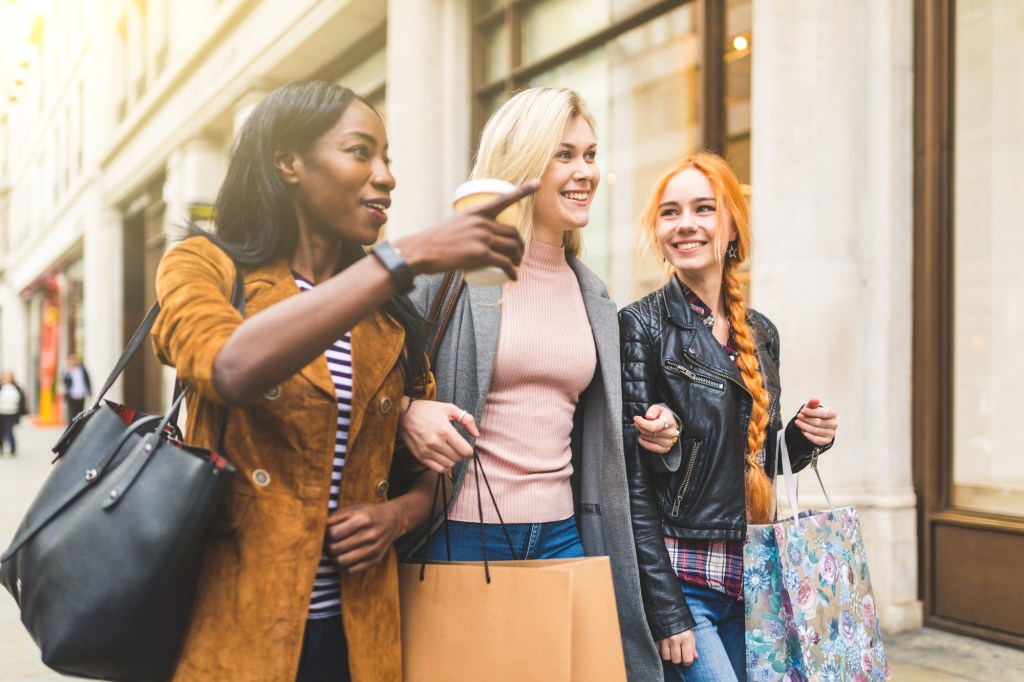Location is everything, so it was hardly a surprise when in-store shopping levels declined over the past few years as consumers settled into new remote work routines — they were in front of a computer and that’s where they shopped. Today, however, as consumers continue to express a desire to get back into the world and return to office, will shopping trips to local stores resume?
According to a new report from Bazaarvoice Inc., the full-funnel authentic user-generated content solution company, the increased adaptation of the hybrid work model is just one of the driving forces behind evolving consumer behaviors today. To get a better understanding, the company conducted a global survey of more than 8,000 consumers, which included 2,000 U.S. respondents, on shopping experiences online and offline, sustainability concerns and social commerce influences.
Bazaarvoice Inc.’s research team found that with 64 percent of U.S. consumers reporting a partial return to a physical office, 53 percent of those consumers are spending more money in physical stores compared to online platforms. Authors of the report said retailers should be focused on optimizing both physical and digital shelves, given the divide, which also shows diverse spending patterns and behaviors where 30 percent of consumers prefer to spend online, 41 percent favor in-store spending and 29 percent feel that their in-store and online spending are quite similar.
Notably, the company’s report found diverse spending and shopping behaviors among Americans can also be seen in how consumers are tackling the ongoing cost-of-living crisis. While 68 percent of consumers said they take pleasure in retail therapy, 17 percent of Americans said they “cannot afford essential purchases right now” due to the strain of current economic conditions.
This strain on spending can also be seen when looking at sentiments around the importance of sustainability with 76 percent of Americans reporting that they feel a company’s commitment to sustainability and ethical practices are important, coming up against many cash-strapped consumers who see the appeal in fast-fashion options. Bazaarvoice Inc.’s survey found that 64 percent of Americans have purchased at least 25 percent or more of their wardrobes from fast fashion retailers, constituting the largest region (79 percent) admitting to purchasing clothing items that end up rarely or even never worn.
“Our research delves into the intricate tapestry of American consumerism and examines how macroeconomic factors influence consumption trends,” said Zarina Stanford, chief marketing officer at Bazaarvoice. “We found that from the lure of fast fashion to the joy of retail therapy and an increasing interest in sustainable practices, financially constrained consumers exhibit a complex set of behaviors. These findings highlight the need for brands and retailers to not only understand but actively engage with these diverse consumer preferences, adapt their commerce strategies to align with industry-changing trends and foster lasting connections by meeting the dynamic expectations of today’s consumers.”
In terms of discovery for online shopping social media continues to play a key role with 60 percent of global consumers reporting they have made purchases influenced by social media and 24 percent of American consumers saying they make monthly purchases based on items they have come across on social media. For 66 percent of consumers, videos on social media are the preferred means of discovering new products.
To earn brand loyalty, the company’s survey revealed that quality is the main factor that influences consumers today, followed by price. Forty percent of consumers also said they are influenced by personalized recommendations while 48 percent said they prefer loyalty programs that enhance their experience. Notably, 64 percent of consumers have purchased a private label product in the last six months with preferences contrasting across categories led by food and beverage (71 percent), health and beauty (48 percent) and fashion (41 percent). Forty-four percent of consumers said they have permanently switched select staple products to private label products.



